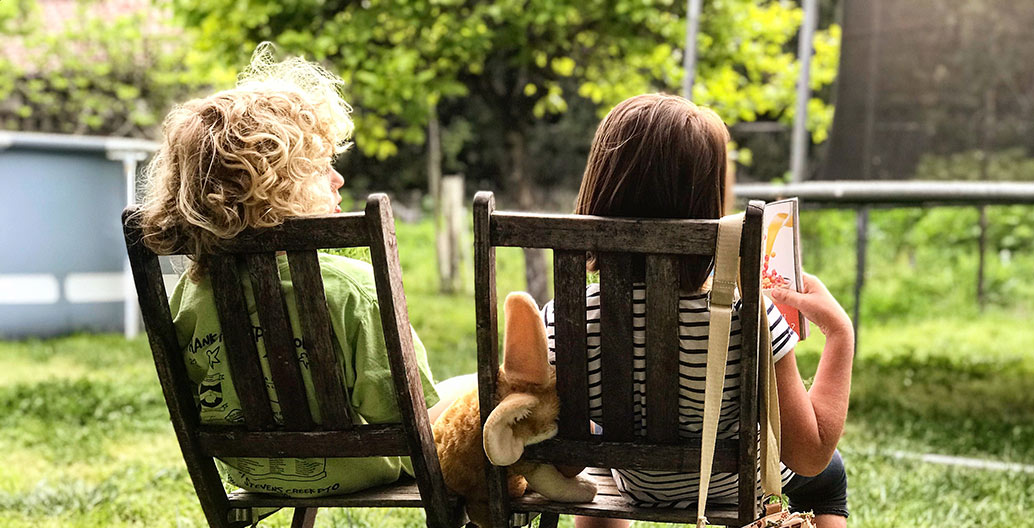
Self-isolation survival pack: For kids
The second installment of Foreground’s self-isolation survival pack is all about kids. We’ve compiled a list of things to do with children focused on learning and play, with an emphasis on design, landscape and environment.
To start with the serious stuff: helping younger folk understand the Coronavirus is an ongoing conversation. The ABC’s Coronacast podcast has run a number of kids-focused episodes, answering questions from children about the virus. The podcast also announced on Friday 10th that, in collaboration with the Art Gallery of NSW, it would be compiling an art exhibition of children’s artwork relating to COVID-19, submissions are now open. Exploratorium is also offering a free tool kit on how to talk to kids about viruses with ideas for demonstration models using household items.
In terms of educational resources, on the top of Foreground’s list is a resource that introduces landscape architecture to a younger audience. It is true that “landscape architect” isn’t usually a child’s first answer to “what do you want to be when you grow up?” The American Society of Landscape Architects have created a downloadable activity book for kids. At 28 pages, it provides a short compact primer for any budding young landscape architect.
A great initiative at a time when excursions are off the table, The Educators’ Spin On it features dozens of virtual field trips for kids that use VR technology. While it mostly caters to an American audience, it also skips earth altogether and you can hang out on Mars for a few hours, or drop into the International Space Station.
Building a home vegetable garden seems to be a popular pastime during lockdown, with seedlings disappearing fast from Bunnings’ shelves. PreparedMama has an exhaustive list of garden-related activities, including this one that might interest young folk: 7 Ways to Make Homemade Seed Starter Pots. Gardening Australia also offers this novel but important project – how to make a DIY skink shelter.
Staying in the garden, The Australian Museum has put together this educational resource for identifying bugs and insects in your backyard and if you have any budding bird watchers, Birdata teaches users to identify different bird species and catalogue them.
We’re not all lucky enough to pass through frog habitat on our once-a-day walk in the park but with or without access to a pond, FrogID is an excellent app for learning to identify different frog species. Another great app for identifying species (indoors or outdoors) is EUCLID, a catalogue for different types of eucalypts.
A resource that could accompany hands-on work in the garden is the National Library of Australia’s ‘Feeding the Family’ classroom resource for years 1 and 2, covering the history of different aspects of food preparation, consumption and production. It aims to cultivate historical literacy skills.
For more of a focus on design thinking, KidsThinkDesign is a non-profit design resource dedicated to the education and inspiration of future designers. It includes a place to showcase kids’ original ideas and projects, Design Dossiers, and Kids Design Lab – a school and museum initiative that connects young students with creative professionals.
There are many art-making tutorials to be found on the internet including children’s book author Mo Willems ‘lunch doodles for kids’, now available on YouTube. This Instagram page is also a great repository of drawing challenges for all ages. For more hands-on folks, Exploratorium has ‘tinkering’ projects to “think with your hands”. Perhaps riffing on the very popular low cost-cosplay, the #gettymuseumchallenge asks people to restage classic artworks at home using whatever materials are to hand, and upload them to Twitter.
Many libraries are running online storytimes including Story Box Library offered by the City of Sydney (originally geared towards schools) and the New York Public Library, whose videos come with downloadable storytime guides. At the start of April, Dolly Parton launched ‘Goodnight with Dolly,’ where she reads stories from her Imagination Library on YouTube.
For virtual worlds suitable for kids, Short Hike is an imaginative environment to explore. Players hike through the fictional Hawk Peak Provincial Park to reach the mountain’s summit. You could also explore the 2019 Australian Developer’s awardees, including Untitled Goose Game, for other indie world-building games. There are a number of educational resources available to teach world-building and coding including writer Em Walsh’s guide to coding for games or this short course from Coursera, both designed for older kids. The Australian Centre of Moving Image has a number of resources for learning digital technologies – geared at both primary and secondary aged kids.
Fans of lego might also enjoy this City Shaper guide that begins with architectural plans and moves through the stages of engineering, construction, project management with consideration of issues such as accessibility, transportation and the environment.
And for a surprising finale, Melbourne’s city has been recreated in Minecraft through a collaboration between Metro Tunnel and Victorian Department of Education and Training. The package includes Mini Melbourne, a map for exploring the city, and Metrol Tunnel Archaeology Adventure, exploring the archaeological dips that took place during the tunnel’s works.


